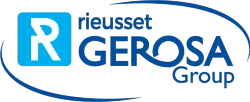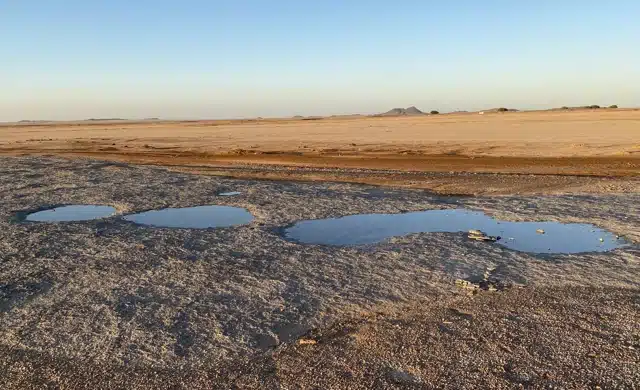
27 May Drought in Catalonia: our actions to reduce water consumption
The drought in Catalonia has reached alarming proportions. It has been raining below the average for 3 years, twice as long as the worst drought experienced so far, that of 2008. This has triggered a crisis that has led the Generalitat to declare a state of emergency in several towns earlier this year, including Santa Perpètua de Mogoda. Currently, thanks to the recuperation of water reservoirs due to the rains, the state of emergency in those towns has been changed to a state of exceptionality.
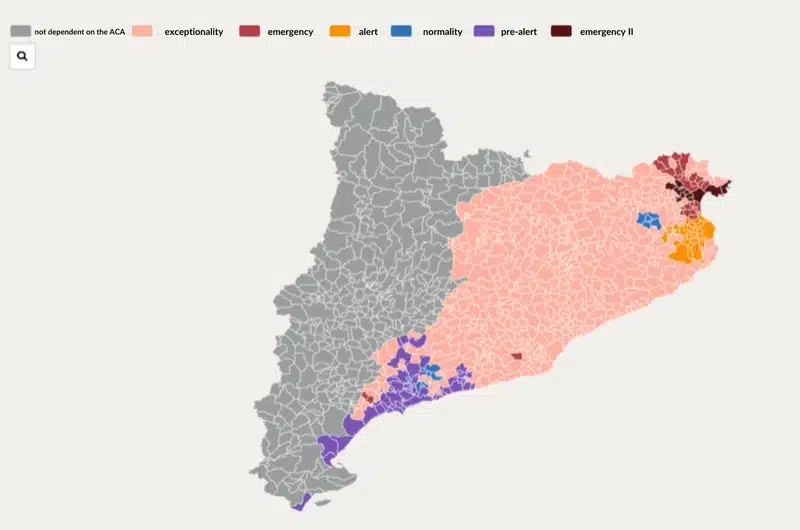
Via Betevé
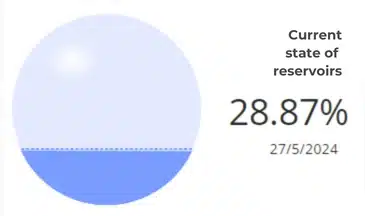
Via Gencat
In the state of emergency, the situation was very critical, and the city councils requested a plan from the companies in their towns to reduce water consumption by 25%. This plan, channeled through the ACA (Catalan Water Agency), seeks to preserve vital water resources as we face one of the worst droughts in the region’s recent history.
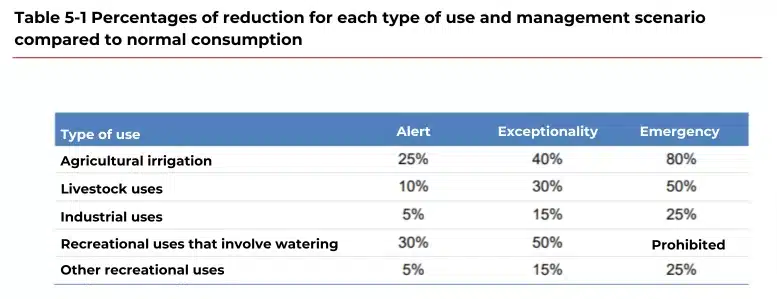
Via Gencat
Let’s take a detailed look at what actions we have implemented and what our future projects are to reduce water consumption at Rieusset.
Actions implemented by Rieusset to reduce water consumption
Our first step in the face of this critical situation was to promote the reduction of water consumption within the work team which was already made up of members of the maintenance, engineering, production, quality and environmental departments, in order to manage the reduction of energy and gas consumption.
This work team meets monthly to analyze the previous month’s consumption, see how the defined action plan is progressing, distribute tasks among the work team and propose new actions that could lead to a reduction in consumption.
In the specific case of the objective to reduce water consumption, the actions implemented to date for reducing water consumption have been as follows:
- Reducing the amount of water in toilet tanks. We have adjusted the volume of water in the toilet tanks so that they use less water per flush, with the objective of obtaining a significant reduction in the water consumption of our sanitary facilities.
- Installing aerators on bathroom faucets. Aerators add air to the water flow, reducing the amount used without compromising the user experience. It is a simple and very effective technology to reduce water consumption in faucets by up to 50%.
- Reducing the frequency of cleaning the printing sand filters. We have significantly reduced the water required for filter cleaning by optimizing the cleaning process and the frequency of maintenance without compromising filter quality.
- Installing a descaler at the cooling tower inlet. The descaler uses a process called ion exchange to remove specific minerals such as calcium and magnesium, which are responsible for water hardness. This helps to improve the quality of the water entering the cooling tower, thereby reducing scale formation and the need for frequent flushing that consumes large amounts of water. Thanks to this measure, reductions of approximately 18% of the total tower consumption are estimated. In addition, this installation prolongs the life of the tower and improves its efficiency. It is an alternative that has been implemented while studying the feasibility of other water reduction technologies such as reverse osmosis installations (explained below).
Thanks to all these implemented actions and our daily work, we have managed to reduce water consumption by 14% in our production. That is, compared to the same period (January – April) of the previous year, we are consuming 14% less water (in m3) for each m2 of product manufactured (labels, sleeves and flexible packaging).
These results confirm that we are on the right track. We continue working to achieve a 25% reduction in water consumption, since when we were in a state of emergency, that is what was established by the ACA, and although currently the water reservoirs have recuperated due to the rains and we are now in a state of exceptionality –with a required reduction of 15% in industrial uses– we are not abandoning the challenge of continuing to reduce water consumption.
Future projects to reduce water consumption
Thanks to our above-mentioned work team, other proposals for continuing to improve process efficiency and reducing water consumption have arisen. For this reason, we list below some of the projects that we have in mind and that are being studied to see their feasibility and profitability.
1. Installation of a reverse osmosis plant for the cooling tower
Reverse osmosis is an advanced filtration technology that removes impurities and contaminants from water through a semi-impermeable membrane at low pressure. The membrane acts at the molecular level, filtering not only minerals and salts, but also bacteria, viruses and other contaminants, resulting in water with high purity.
Our idea of installing a reverse osmosis plant at the cooling tower inlet is aimed at improving the quality of the water used. The use of reverse osmosis water can significantly reduce the formation of scale and mineral deposits in the system, which will improve thermal efficiency and increase the life of the equipment.
The main advantages of this installation are:
- Reducing the amount of chemicals needed for treatments to keep the system operating efficiently.
- Reducing the frequency of maintenance and flushing necessary to eliminate accumulations.
- More efficient recycling and reuse within our processes, thanks to higher water quality.
- Reducing our total water consumption.
Like all technologies, it has some disadvantages that need to be assessed in case they could affect the viability of the project:
- Wastewater production: During the reverse osmosis process some of the treated water is discarded because it contains high concentrations of filtered contaminants. Sometimes this can mean that of all the water treated by reverse osmosis, 25% is reject water.
- The considerable amount of energy required: This technology requires a lot of energy to operate, since pressure is needed to push the water through the membranes.
- High economic cost: Reverse osmosis installations can be significantly more expensive compared to other water treatment methods such as water softeners, previously implemented at Rieusset.
2. Reusing rainwater for the cooling tower or sanitary purposes
The idea is to collect rainwater for use in applications such as sanitary water. This is a sustainable practice that can help to significantly reduce the demand for potable water.
However, the use of water in the cooling tower presents specific challenges, mainly due to the need to ensure that the water meets certain quality standards so as not to compromise the system. This would involve periodic analyses and additional treatments prior to use.
In addition, we must take climatic considerations into account. A crucial factor is the rainfall pattern of the region where we are located, Catalonia. Given that rainfall is not very intense or regular, the volume collected may not justify the initial investment as well as operating costs of rainwater collection and the treatment system. The climatic reality of the drought makes the project lose potential and be less attractive from a profitability perspective, but we do not want to rule it out completely because we think that, in any case, water collection can help us in other applications that perhaps we have not yet considered.
In conclusion, at Rieusset we are committed to complying with the restrictions set by the city council of Santa Perpetua de Mogoda and to continue working to reduce our water consumption and combat this serious drought situation in Catalonia.
| We Manufacture: | Meet Rieusset: |
